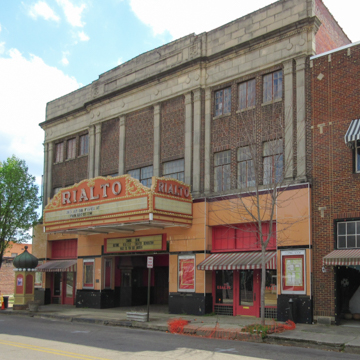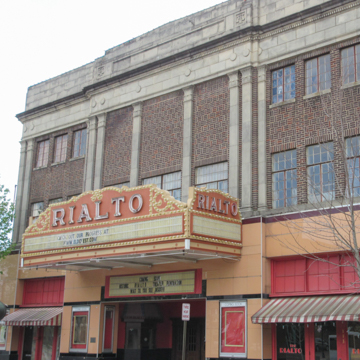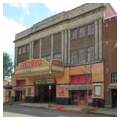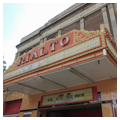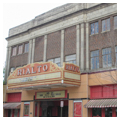The first Rialto Theater on this site was deemed insufficiently grand for the needs of a city in the grip of an oil boom, and although still relatively new, it was demolished in 1929 to make way for the present more luxurious three-story brick edifice that seated 1,400. In an entire section devoted to the theater’s opening, the local newspaper cited the owners’ wishes “to construct a modern theater for the production of the most metropolitan pictures in an atmosphere of luxury and artistic environment.” Arkansas Amusement Enterprises, under the leadership of two local men, L. B. Clark and W. F. McWilliams, built the theater as the flagship for their chain, which eventually operated thirty-two theaters in the state. Although the contractor and architects were local, the state-of-the-art heating, cooling, and sound and projection systems were installed by a Buffalo, New York, engineering firm that cooled the theater with an innovative “washed air ventilation system.” To accommodate the road shows that were still popular, the theater included a large 32 × 63–foot stage and a Kohler organ. On the front, the brick wall laid in a basketweave pattern forms the background for cast-stone pilasters that mark three bays and separate metal casement windows in the second- and third-story levels. Topping that, a cast-stone frieze, cornice, and parapet display modest ornamental details. The focal point of the exterior is the showy projecting marquee where neon strips accent the rectilinear base while an arabesque of lightbulbs twinkle above. Where the exterior is relatively restrained, the eclectic interior is exuberantly decorated with colorful painted patterns and sumptuous plaster moldings that surround the proscenium, span the vaulted ceiling, and, at the front of the theater, form dramatic arches with heavy draperies and ornate balustrades creating make-believe grand box seats overlooking the stage. The artistic interior helped draw crowds from Louisiana and Texas, as well as Arkansas, to see the 1939 regional premiere of Gone with the Wind.
You are here
Rialto Theater
If SAH Archipedia has been useful to you, please consider supporting it.
SAH Archipedia tells the story of the United States through its buildings, landscapes, and cities. This freely available resource empowers the public with authoritative knowledge that deepens their understanding and appreciation of the built environment. But the Society of Architectural Historians, which created SAH Archipedia with University of Virginia Press, needs your support to maintain the high-caliber research, writing, photography, cartography, editing, design, and programming that make SAH Archipedia a trusted online resource available to all who value the history of place, heritage tourism, and learning.


